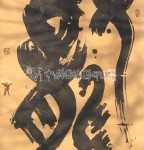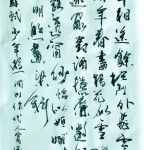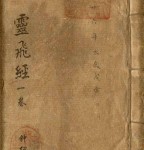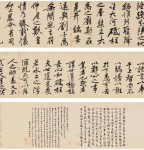| Article Index |
|---|
| Introduction to Chinese Calligraphy |
| Evolution and Different Styles |
| All Pages |
Chinese calligraphy can be seen as the backbone of China's artistic tradition. This branch of art was, and still is, the most dominant vehicle through which the Chinese express their emotions in the world of visual art.
To begin with, it is crucial to differentiate Western and Chinese Calligraphy. In the west, calligraphy, literally meaning beautiful or good writing is a minor art which tends to embellish letters in a rather preconceived and rigid manner.
Western calligraphy is more often than not executed by well practiced artisans (in the past mainly monks), than real artists. This is not to say that the more casual and expressive forms of calligraphy did not exist, however, people involved in this practice were never looked upon as established artists.
The story of Chinese calligraphy is dramatically different. In China, from days of old like at present, calligraphy was considered to be one of the highest forms of art. Chinese calligraphy has a great range of different techniques and artistic trends, it can be manifested in square-like and rigid forms all the way to highly abstract and highly expressionist styles that are unreadable even to the native Chinese.
This comes to show that words and meaning are not absolutely essential for the appreciation of Chinese calligraphy. On the other hand the meaning of the characters is definitely an advantage when readable. One of the most unique features of Chinese calligraphy is the fact that verbal and visual merge into one entity. Chinese characters have a set stroke order, which means everybody will write characters in the same order of strokes. There is a certain logic to the way the characters are written and this logic is coherent in all characters.
When a Chinese looks at calligraphy he or she can naturally detect any peculiarities in the form and in the stroke order. It is not rare to see viewers tracing the artists' characters in order to better understand his or her 'flow'. By tracing the character physically or by imagination one can understand how the artist improvises and interprets a certain character. This phenomenon represents an objective standard through which a viewer can understand art. Through familiarity with the shapes and stroke order of the characters, ordinary people can approach art equipped with means to better analyze what they see.
Another interesting aspect of calligraphy is its cultural significance and its close bond with painting. The 'Four Treasures of the Study', brush, ink, ink slab and paper had an almost sacred cultural position in traditional China. Unlike the Western brush, paint and canvas which are merely tools or means to an end, in China these so-called 'tools' have a spiritual significance that stresses the importance of the means and the process involved in creating a work of art.
This, in a way, elevated the importance of artistic creation to an exceptionally prestigious cultural position. The Chinese brush, not necessarily a tool to depict reality, is more of an instrument through which the artist expresses his or her inner mood and emotions. In painting, this led to the concept of 'writing the idea' or meaning (Xie Yi, 写意) where the basic techniques of calligraphy became a major influence. The special characteristics of the Chinese brush enable it to create a diverse range of different strokes, therefore the calligrapher does not need to change tools for different effects. Instead, he relays on his skill and mastery of one brush.
This also enables him to engage in a continuous process that is not interfered in the middle. Thanks to the unique features of the brush, ink and paper the artist can enter a continuous meditative state of mind. This intimate relationship between calligraphy and painting is further intensified by the development of a tradition of incorporating calligraphy into painting. Here, again, calligraphy plays a unique role in the appreciation of art. The Chinese artist can use calligraphy as an additional way to express and explain his or her feelings.
This can be in the form of a poem, a description of the occasion and circumstances in which a particular piece of art was made, a dedication to the receiver of the work or just a seemingly random remark about life or a certain event. The common denominator being the fact that the artist can better clarify his/her intentions as wellas use it as an additional element in the composition. The Chinese painter uses "art within art". This is not to say that Chinese calligraphy is a form of expression that accommodated more dominant forms of art, on the contrary, masterpieces of calligraphy have always been considered to be extremely precious. Some of these masterpieces became corner stones in the development of the Chinese system of writing.
| < Prev | Next > |
|---|
- 2010-12-30 - History of Chinese calligraphy : South North and Sui dynasty
- 2010-12-24 - Oracle Bones of Ancient ChinaOracle Bone Script
- 2010-12-23 - 论用笔与结字:书法艺术成熟的三大历史阶段
- 2010-12-23 - Cursive Script of Chinese Calligraphy
- 2010-12-20 - The Calligraphic Spirit
- 2010-01-18 - Modern Poetry in China : A Shimmering Window
- 2010-01-10 - 关于“请循其本”:古代书法创作研究国际学术讨论会的几点感想
- 2009-12-02 - 浅析书法演进理路
- 2009-11-03 - 浅谈书法的艺术神韵(转载)
- 2009-10-10 - 对话朱守道、李一:论中国书法传统的继承与创新













